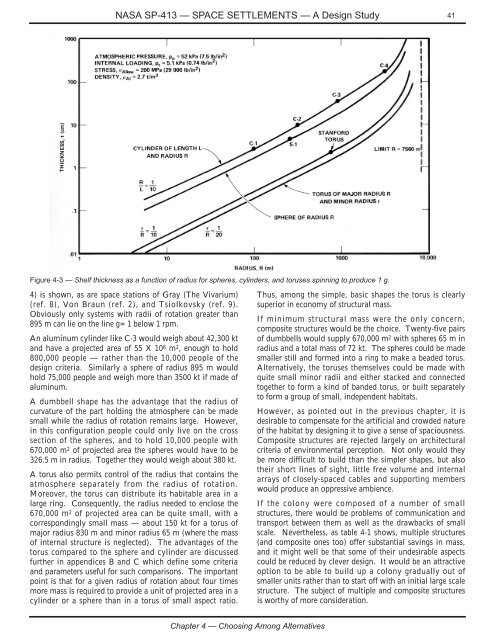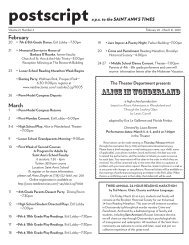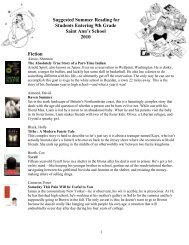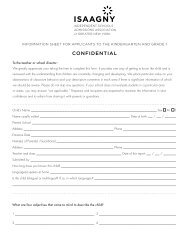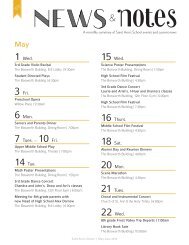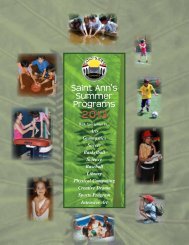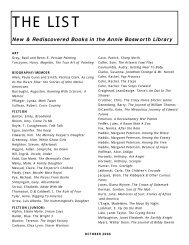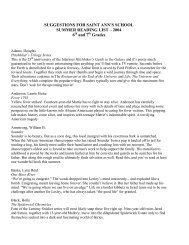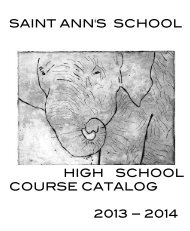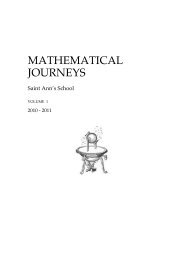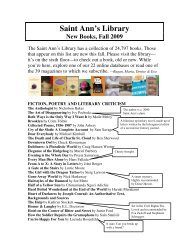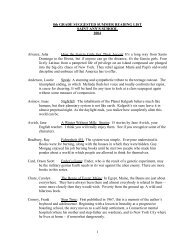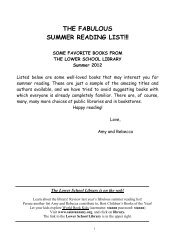NASA SP-413 Space Settlements - Saint Ann's School
NASA SP-413 Space Settlements - Saint Ann's School
NASA SP-413 Space Settlements - Saint Ann's School
Create successful ePaper yourself
Turn your PDF publications into a flip-book with our unique Google optimized e-Paper software.
<strong>NASA</strong> <strong>SP</strong>-<strong>413</strong> — <strong>SP</strong>ACE SETTLEMENTS — A Design Study<br />
41<br />
Figure 4-3 — Shelf thickness as a function of radius for spheres, cylinders, and toruses spinning to produce 1 g.<br />
4) is shown, as are space stations of Gray (The Vivarium)<br />
(ref. 8), Von Braun (ref. 2), and Tsiolkovsky (ref. 9).<br />
Obviously only systems with radii of rotation greater than<br />
895 m can lie on the line g= 1 below 1 rpm.<br />
An aluminum cylinder like C-3 would weigh about 42,300 kt<br />
and have a projected area of 55 X 10 6 m 2 , enough to hold<br />
800,000 people — rather than the 10,000 people of the<br />
design criteria. Similarly a sphere of radius 895 m would<br />
hold 75,000 people and weigh more than 3500 kt if made of<br />
aluminum.<br />
A dumbbell shape has the advantage that the radius of<br />
curvature of the part holding the atmosphere can be made<br />
small while the radius of rotation remains large. However,<br />
in this configuration people could only live on the cross<br />
section of the spheres, and to hold 10,000 people with<br />
670,000 m 2 of projected area the spheres would have to be<br />
326.5 m in radius. Together they would weigh about 380 kt.<br />
A torus also permits control of the radius that contains the<br />
atmosphere separately from the radius of rotation.<br />
Moreover, the torus can distribute its habitable area in a<br />
large ring. Consequently, the radius needed to enclose the<br />
670,000 m 2 of projected area can be quite small, with a<br />
correspondingly small mass — about 150 kt for a torus of<br />
major radius 830 m and minor radius 65 m (where the mass<br />
of internal structure is neglected). The advantages of the<br />
torus compared to the sphere and cylinder are discussed<br />
further in appendices B and C which define some criteria<br />
and parameters useful for such comparisons. The important<br />
point is that for a given radius of rotation about four times<br />
more mass is required to provide a unit of projected area in a<br />
cylinder or a sphere than in a torus of small aspect ratio.<br />
Thus, among the simple, basic shapes the torus is clearly<br />
superior in economy of structural mass.<br />
If minimum structural mass were the only concern,<br />
composite structures would be the choice. Twenty-five pairs<br />
of dumbbells would supply 670,000 m 2 with spheres 65 m in<br />
radius and a total mass of 72 kt. The spheres could be made<br />
smaller still and formed into a ring to make a beaded torus.<br />
Alternatively, the toruses themselves could be made with<br />
quite small minor radii and either stacked and connected<br />
together to form a kind of banded torus, or built separately<br />
to form a group of small, independent habitats.<br />
However, as pointed out in the previous chapter, it is<br />
desirable to compensate for the artificial and crowded nature<br />
of the habitat by designing it to give a sense of spaciousness.<br />
Composite structures are rejected largely on architectural<br />
criteria of environmental perception. Not only would they<br />
be more difficult to build than the simpler shapes, but also<br />
their short lines of sight, little free volume and internal<br />
arrays of closely-spaced cables and supporting members<br />
would produce an oppressive ambience.<br />
If the colony were composed of a number of small<br />
structures, there would be problems of communication and<br />
transport between them as well as the drawbacks of small<br />
scale. Nevertheless, as table 4-1 shows, multiple structures<br />
(and composite ones too) offer substantial savings in mass,<br />
and it might well be that some of their undesirable aspects<br />
could be reduced by clever design. It would be an attractive<br />
option to be able to build up a colony gradually out of<br />
smaller units rather than to start off with an initial large scale<br />
structure. The subject of multiple and composite structures<br />
is worthy of more consideration.<br />
Chapter 4 — Choosing Among Alternatives


